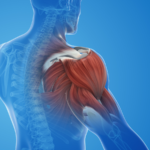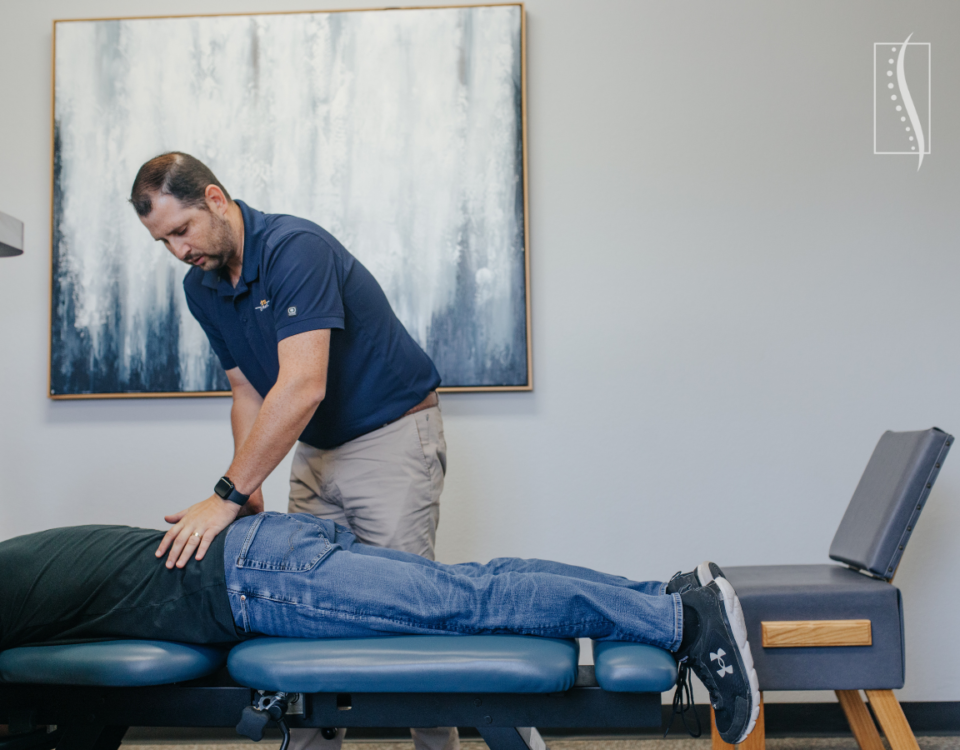
What Is Upper Crossed Syndrome?
June 6, 2024
Anabolism and Catabolism: The Body’s Delicate Balance
June 21, 2024Dr. Ryan Woods, a leading expert in posture and musculoskeletal alignment, discusses the serious health implications of forward head posture (FHP). Forward head posture is a postural abnormality and something we see frequently in our clinics.
Understanding Normal Posture
In normal posture, the head is positioned directly over the shoulders, and the spine maintains its natural curves, providing optimal support for the body’s weight. This alignment minimizes stress on the muscles, ligaments, and joints, promoting efficient movement and reducing the risk of musculoskeletal issues.
Exploring Forward Head Posture
On the other hand, forward head posture, also known as “text neck”, is characterized by the forward positioning of the head in relation to the shoulders. This posture is often associated with prolonged periods of sitting, hunching over electronic devices, or poor ergonomic positioning. In forward head posture, the head juts forward, causing the neck to extend and the shoulders to round forward. This misalignment can lead to increased strain on the neck muscles, compression of the cervical spine, and imbalances in the supporting musculature.

What is the Impact of Forward Head Posture on Health?
– Research shows that for every inch the head moves forward, the weight of the head on the neck increases by 10 pounds. This excessive strain can contribute to neck pain, headaches, and degenerative disc disease.
– Studies have found that individuals with FHP experience up to a 53% reduction in neck flexion range of motion compared to those with normal posture.
– FHP has been associated with increased risk of cervical disc herniation. One study found a 79% incidence of disc herniation in individuals with FHP compared to 34% in those with normal posture.
– Forward head posture can also restrict blood flow and nerve impulses, potentially leading to numbness, tingling, and weakness in the arms and hands.
– Long-term FHP has been linked to early wear and tear of the cervical spine, increasing the risk of degenerative changes and osteoarthritis in the neck.
These statistics highlight the significant musculoskeletal strain and damage that can occur due to prolonged forward head posture. Addressing this postural issue is crucial for maintaining neck and spinal health.
The Long Term Impact from Forward Head Posture
Over time, tissues in the neck change when under the stress from Forward head Posture. There are two types of tissues we’ll address.
- Red tissue marks the muscle tissue in the body rich in blood supply and in its basic form: responsible for movement.
- White tissue includes connective tissue, like tendons and ligaments, which are responsible for the stability and support of the spine.
When these tissues are under prolonged stress from forward head posture, these tissues can become damaged and take months-to-years to heal.
Everyday Factors Contributing to Forward Head Posture
From prolonged screen time and desk work to poor sleeping habits, Dr. Woods explores the everyday activities that can contribute to the development of FHP. He then provides practical, science-backed solutions to help viewers improve their posture and alleviate the associated neck, shoulder, and back pain.
Don’t let poor posture hold you back. Take the first step toward standing tall and feeling your best. Speak with our doctors today!



